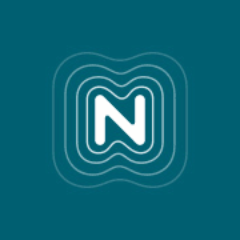
Public Interest Registry published their 2018 annual report Thursday, highlighting what for them was a âsolid year for .org, from exceeding financial goals to continuing to grow a strong user base with high renewal rates. These results are a direct reflection of PIRâs commitment to promoting quality domains in the .org base.â For 2019, the .org registry is âputting an even greater focus on combating abuse and making significant investments in education and outreach initiatives.â
It was a year that saw domain names under management for .org drop to 10.3 million at the end of 2018 from 10.4 million at the end of 2017. Renewals though increased by 100,000 from 6.7m to 6.8m while the renewal percentage increased from 75.7% to 77.4%.
But .org wasnât the only top-level domain in the top 10 by registration numbers to drop with .de and .uk also dropping by around 100,000 according to Verisignâs Domain Name Industry Brief, but .net (500,000) and .ru (400,000) dropped even further while .info dropped from being the eighth largest TLD with 6.4 million registrations to sliding out of the top 10 meaning their registration count was somewhere below 4.8 million registrations which is what the tenth largest TLD (.tw) had at the end of 2018.
As the annual report notes, they are challenging times with there now being 1,250 gTLDs including PIRâs .ong and .ngo and 4 others, currently with just shy of 8,000 registrations, compared to the 6 when .org was created in 1984.
Financially 2018 was a year in which PIR note they exceeded their financial goals with net bookings growing $1.1m to 93.0m and operating income jumping $7.0m to $45.9m. For 2018 mid-year PIR made some âboldâ business decisions, that led to a strong financial performance, and results specifically reflecting an ongoing commitment to high ethical standards. Mid-year also saw a realignment of marketing incentives a renewed focus on the quality (not just the quantity) of .org registrations. The .org Community grew as the result of this change. There were more quality registrations and more users. This led to significant contributions toward Internet Societyâs work for an open, globally-connected, secure and trustworthy Internet for everyone.
Other achievements in 2018 highlighted in the report were reorganising the management structure to align with strategic priorities, sharpening efforts to further improve the quality of the .org base, maintaining the robust .org renewal rates, and producing strong financial results in support of the Internet Society and their work to keep the Internet free and open for all. The report also details PIRâs plans for 2019, which include initiatives aligned with PIRâs mission to help educate those who are making a difference in their communities through the power of .org.
In 2019, PIR is building upon these efforts through the launch of the Quality Performance Index (QPI) initiative, which helps reward those registrars who are growing and maintaining trust in the .org domain while identifying areas of improvement for registrars when it comes to online trust.
The Report also details PIRâs robust anti-abuse program, its policy and privacy initiatives, and expanding education and outreach efforts. For 2019, PIR is putting an even greater focus on combating abuse online and making significant investments in education and outreach initiatives. PIR also is establishing a .ORG Impact Awards program to recognise the incredible work of organisations across the globe, and creating a PIR Grants Program to connect PIR with highly motivated individuals and groups with mutual aspirations to help them further their missions.
âPIR achieved the ambitious goals we set for ourselves in 2018, thanks in no small part to the inspiring work of the .org community. Itâs the people and organisations using .org to make a positive impact on the world who motivate us to remain diligent in our stewardship of the .org domain,â said Jon Nevett, who was appointed President and CEO of Public Interest Registry in December 2018.
âThis year, we are in the midst of a number of exciting initiatives aimed at providing even more support for the broad .org community and our domain industry partners. These include maintaining .org as the most trusted domain extension, amplifying our education and outreach efforts, and continuing to expand our already robust anti-abuse program.â
To download the 2018 Annual Report in full, go to: https://pir.org/pir-2018-annual-report/









